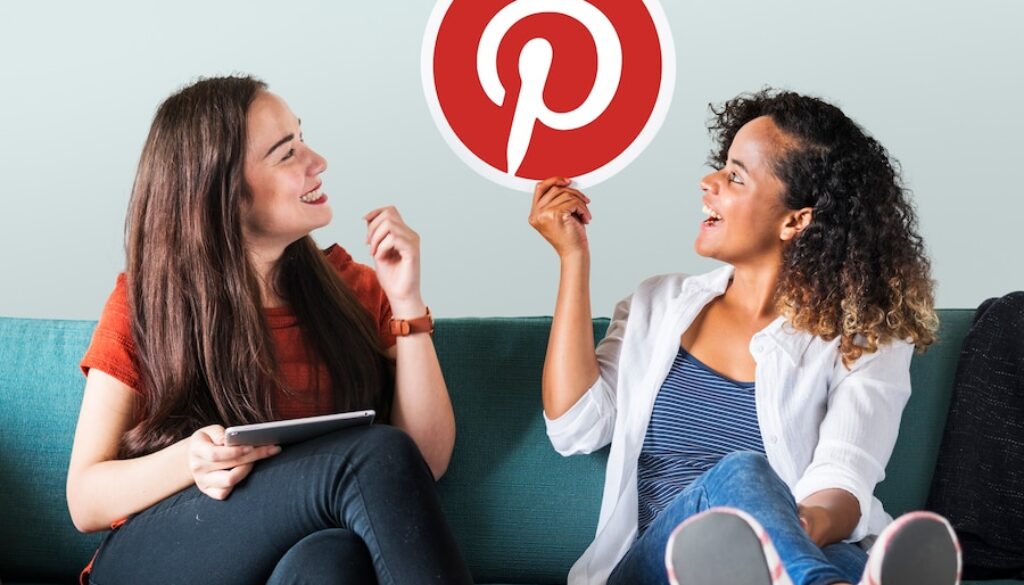How to Make Money on Pinterest (Full Step-by-Step Guide)
Ever thought about how people make money from Pinterest?
A lot of people scroll Pinterest every day, but only a few know it can actually bring in money from hom, even while you sleep.
Whether you’re looking for a side hustle, full-time income, or just some extra cash, Pinterest has serious potential.
This guide is for you if you want real, simple steps to build passive income streams using Pinterest.
You don’t need to be an expert, and you don’t even need a blog (though we’ll share a few blogging tips too if you’re curious).
All you need is a smart Pinterest strategy, some creativity, and a little consistency.
Quick Note: I made $3,647 in a month with Pinterest by using this one simple strategy — and you don’t need a blog or experience to do it. Download the Free Guide Here!
By the end of this post, you’ll know exactly how to earn money from home with Pinterest, even if you’re just starting out. Sound good? Let’s break it down step by step and turn your scroll time into passive income.
Related:
- How to Make Money Using Pinterest: Easy Tips & Strategies
- Pinterest Affiliate Marketing: Earn Money by Creating Pins
1. Set Up a Pinterest Business Account
If you want to make money from Pinterest, your first move is to switch to a business account.
This gives you access to features like analytics, ads, and profile tools that a regular personal account doesn’t include.
Here’s how to set it up:
- Go to pinterest.com/business/create
- Fill out your name, email, and business details
- Pick the category that matches your niche
That’s it. With a Pinterest strategy in place, your business account will help you track what’s working so you can earn faster.
2. Choose a Niche That People Search For
Don’t post about everything. Pick one topic that people care about—something they search for often and that has products or services tied to it.
Popular Pinterest niches for passive income include:
- Home organization
- Fitness routines
- DIY crafts
- Budgeting and personal finance
- Recipes and meal prep
- Digital downloads (printables, planners)
Your niche should feel like something you’d talk about with a friend. That way, creating content won’t feel like a chore.
3. Learn the Basics of Pinterest SEO
Pinterest works like a search engine. That means it needs the right words to understand what your content is about. This is where Pinterest SEO comes in.
Quick Note: I made $3,647 in a month with Pinterest by using this one simple strategy — and you don’t need a blog or experience to do it. Download the Free Guide Here!
Here’s how to use it:
- Use keywords in your profile, boards, pin titles, and descriptions
- Keep text clear, helpful, and natural
- Add hashtags at the end of descriptions (just a few)
Let’s say your niche is meal prep. Instead of calling your pin “Yum!” you’d use something like “Easy Budget-Friendly Meal Prep Ideas.” It’s specific, helpful, and searchable.
4. Create Eye-Catching Pins
No need to be a designer. You can create awesome pins using free tools like Canva. Just pick a clean template, add your text, and upload an image that fits your niche.
Tips for pin design:
- Use vertical images (2:3 ratio, like 1000×1500 px)
- Keep fonts big and easy to read
- Use high-quality photos and bold colors
Want to sell something later? Add your logo or website name to the bottom of each pin.
5. Promote Affiliate Products
Affiliate marketing is a great way to create passive income streams. You promote someone else’s product, and when someone buys through your link, you get a cut.
Here’s what to do:
- Sign up for affiliate programs like Amazon, ShareASale, or Etsy affiliate
- Find products that fit your niche
- Create pins for each product and link directly using your affiliate URL
Make sure you disclose the link. A simple note like “This is an affiliate link. I may earn a small commission” is enough.
6. Sell Your Own Digital Products
Don’t want to promote someone else’s stuff? Create your own. Think digital planners, printables, eBooks, or Pinterest templates. You can sell them on sites like Gumroad, Etsy, or Payhip.
Why it works: Once it’s live, people can buy it again and again—hello, passive income.
Steps to sell:
- Create the product (Canva is great for this)
- Upload to your shop platform
- Create pins showing the value of your product
- Link directly to your product page
Boom. Now you’re building your own mini business right on Pinterest.
7. Drive Traffic to Your Blog or YouTube
If you do have a blog or YouTube channel, Pinterest can help drive traffic like crazy. One viral pin can bring in thousands of views over time.
For blogging tips, here’s what helps most:
- Make a pin for every blog post
- Add keywords to your pin title and description
- Include a call to action like “Click for the full guide”.
The same goes for YouTube. Create pins with titles like “How to Budget Your First $1000 – Full Video Inside.”
8. Offer Pinterest Services to Others
Here’s another idea—offer Pinterest help to other people. A lot of small businesses want help setting up their account, making pins, or planning their Pinterest strategy.
Quick Note: I made $3,647 in a month with Pinterest by using this one simple strategy — and you don’t need a blog or experience to do it. Download the Free Guide Here!
Services you can offer:
- Pin design
- Account setup
- Monthly management
- SEO help
Even if you’re new, you can start by making a simple portfolio and offering your services on Fiverr, Upwork, or even inside Facebook groups.
9. Use Pinterest Ads (Optional, But Helpful)
Pinterest ads aren’t required, but they can boost your growth if you’ve got a little budget. It’s like putting a spotlight on your pins.
Here’s how it helps:
- Get more views and clicks on your product pins
- Test which types of content work best
- Build email signups for future product launches
Start with $5–$10 a day. Watch how people respond, and adjust as you go.
10. Stay Consistent and Don’t Give Up
Pinterest is a long game. You won’t make a full income in a week—but it adds up. If you post quality content every week and stick to your Pinterest strategy, you’ll see results.
Some good habits:
- Pin 3–5 times a day
- Use a scheduler like Tailwind or Pinterest’s built-in tool
- Repin your best-performing pins every few weeks
The more you pin, the more the algorithm learns what to show people.
Conclusion
Making passive income with Pinterest doesn’t have to be complicated. You don’t need a blog (though it helps), and you definitely don’t need to be a designer or marketing pro.
You just need to show up, stay consistent, and keep learning. Whether you’re promoting products, selling your own stuff, or helping others, Pinterest can turn your free time into real earn money from home opportunities.
So if you’re looking for a low-cost, low-stress side hustle, this might be it. Give it a shot. You’ve got nothing to lose.
FAQs
Q1: Do I need a blog to make money from Pinterest?
Nope! You can use affiliate links, sell products, or offer services—all without a blog.
Q2: How much can I realistically earn?
It varies. Some people earn $100 a month; others make thousands. It depends on your niche, consistency, and content quality.
Q3: What’s the best way to get started as a beginner?
Start with a business account, pick a niche, create simple pins, and promote helpful content. Don’t overthink it.
Q4: Can I use Pinterest on my phone only?
Yes, but managing everything (especially creating pins) is easier on a laptop or desktop.
Q5: How long does it take to see results?
Most people start seeing traction within 1–3 months if they post regularly and follow good Pinterest strategy.
And there you go! A full beginner-friendly guide to turning your pinning into passive income streams that work while you sleep. Got questions? Ask away!

